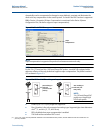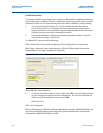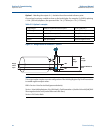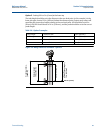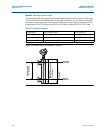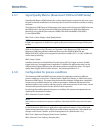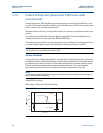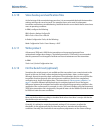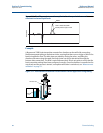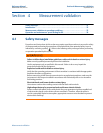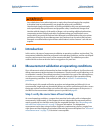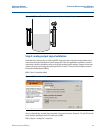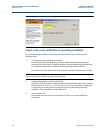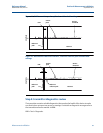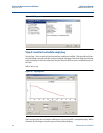
49
Reference Manual
00809-0700-4530, Rev AA
Section 3: Commissioning
September 2013
Commissioning
3.3.10 Store backup and verification files
As the last step of the commissioning procedure, it is recommended that both the transmitter
settings and the echo curve be stored. For example, these can be used for subsequent
transmitter verification or troubleshooting. Note that the echo curve should also be stored once
more at operating conditions.
In RRM, configure the following:
RRM > Device > Backup Config to file
RRM > Tools > Echo Curve > Record
In Radar Configuration Tools, do the following:
Radar Configuration Tools > View > Memory > All EE
3.3.11 Write protect
A Rosemount 5300 and a 5400 Series transmitter can be password protected from
unintentional configuration changes. The default password is 12345 and it is recommended
that this password is not changed to facilitate service and maintenance of the transmitter.
In RRM:
Tools > Lock / Unlock Configuration Area
3.3.12 On the bench test (optional)
Sometimes the actual process is not available and the transmitter is pre-commissioned on the
bench. In this case, the level is often simulated using metal-plates, water, or other targets.
Although, these tests provide a basic verification of the transmitter, they do not verify that the
transmitter functions properly at the actual process conditions. Bench tests complement
verification tests, but do not replace them. The instructions in “Measurement validation” on
page 51 should be followed and the bench test is considered optional. One of the largest
differences between the simulated level and the actual level during operating conditions is the
amplitude of the surface peak. For example, in a 4 in. (100 mm) chamber using the Rosemount
5300 Series transmitter and a single probe, the peak of water can be 10000 mV, while oil would
be 2000 mV under the same conditions.
NOTE:
Never set the thresholds according to simulated level values since there is a major risk that the
thresholds may be set too high.
Generally, it is advised to accept the automatic settings. If it is necessary to adjust the
thresholds, do the adjustments the first time the process is started at actual operating
conditions. Normally, the thresholds do not require any adjustments on the custom settings.



